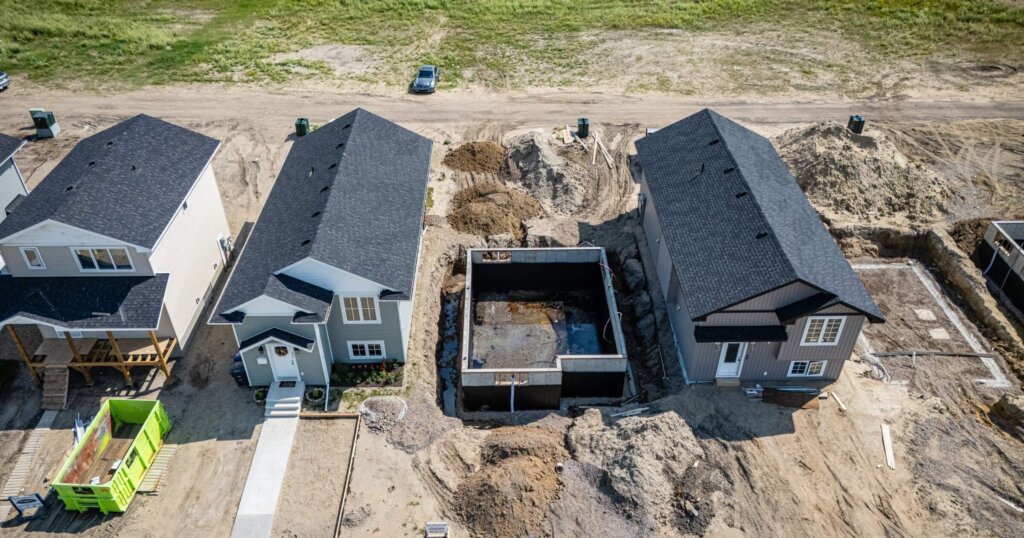In 2025, Canada is ramping up federal funding to address the housing affordability crisis through multiple federally backed initiatives. This article examines the national housing strategy and explores key programs, including the Affordable Housing Fund, the Rapid Housing Initiative, and the Housing Accelerator Fund. We look at what these programs aim to achieve and how they’ve performed so far. We’ll also evaluate whether Ottawa’s efforts are making a dent in housing needs and how provincial implementation affects results.
Quick Look
- Over 50,000 units have been supported through the Affordable Housing Fund, targeting low-income renters and women fleeing violence.
- The Apartment Construction Loan Program has backed 59,000+ rental units with $23.35 billion in commitments to expand purpose-built supply.
- Through the Rapid Housing Initiative, more than 16,000 units have been fast-tracked since 2020 to support people experiencing homelessness.
- The Federal Lands Initiative has enabled the development of 4,899 new housing units, with 1,894 units priced below 80% of the median market rent.
- The Co-operative Housing Development Program has received $1.5 billion in funding to create up to 3,200 new co-op units, with 837 already committed.
Canada’s national housing strategy
The National Housing Strategy, launched in 2017 and renewed in April 2024, centers on creating affordable housing through a package of federal programs and investments. Over a span of 10+ years, Ottawa has committed $115 billion under this strategy to build, repair, or acquire housing units across Canada. That funding supports a wide range of housing types, from low-income social housing to purpose-built rentals to non-market co-operative units.
The strategy responds to rising home prices and increasing rental stress across urban centres, particularly among low- and moderate-income households. The Canada Mortgage and Housing Corporation (CMHC) estimates that nearly six million homes will be required by 2030 to meet demand. To achieve that target, the federal government relies on incentive-based funding mechanisms, with provinces and municipalities delivering actual policy changes, such as zoning reform.
By combining loan programs, land releases, and infrastructure grants, the strategy aims to address affordability from multiple angles. The federal government plays a crucial role in financing, while provinces co-deliver services through bilateral agreements that match and administer funding locally.
Federal housing initiatives
Affordable Housing Fund
This fund, formerly known as the National Housing Co-Investment Fund, provides a combination of low-interest CMHC loans and targeted grants to non-profits, co-ops, and municipalities that are building deeply affordable housing. As of March 2025, over 46,000 units have received funding through this program, serving low-income households and survivors of domestic violence. Thanks to an additional $2.7 billion allocated in recent fiscal plans—$250 million of which supports housing for women fleeing abuse—the program is helping more community-led development than ever before.
Still, the fund faces criticism for its slow application processing and complex eligibility criteria, which can deter smaller builders. On the plus side, the combined loan-plus-grant model helps maximize the impact of the subsidy, allowing developers to stretch funding across more units. Mixed-income developments, where market-rate rental or ownership units help subsidize non-market units, are also a growing focus, aided by provincial matching of land or capital contributions.
Apartment Construction Loan Program

Photo courtesy of https://www.shutterstock.com/
Built to incentivize the private construction of purpose-built rental housing, this program has committed roughly $23.35 billion as of March 2025, funding more than 59,000 rental units across Canada, many of which are designed for low- to moderate-income tenants. Loan agreements are paired with accelerated capital cost allowance and repayment terms favorable to developers, making this a go-to funding tool in high-demand markets.
Some critics argue that the program disproportionately benefits for-profit developers, with fewer guarantees that new supply remains affordable. Nevertheless, early signs show broader outcomes: expanding eligibility to include seniors’ and student-oriented rental housing makes the program more flexible, and the funding helps defray rising construction costs while supporting rental inventory growth.
Rapid Housing Initiative
This Canada-wide initiative channels funding toward the rapid conversion or construction of units for people facing homelessness or displacement. Since 2020, three rounds have allocated approximately $4 billion, resulting in over 16,000 units, nearly half of which are designated for Indigenous communities, and many of which have been assigned to women and families. The goal is to deliver usable housing within 12 to 18 months, often utilizing modular builds or motel conversions.
Its rapid pace sets the Rapid Housing Initiative (RHI) apart, yet long-term permanence is less guaranteed unless municipal or provincial partners maintain leases or reinvest in longer-term use. Even so, RHI remains a rare federal program that delivers measurable shelter outcomes in the short term, filling critical gaps during crises while longer-term housing is being built.
Affordable Housing Innovation Fund
This fund supports creative, scalable building models—such as modular construction, mass timber buildings, and 3D printing—emphasizing low-carbon delivery and cost-efficient systems. As of March 2025, the Affordable Housing Innovation Fund has committed a total of $432.17 million across two phases to support 26,254 housing units—18,045 under Phase 1 and 8,209 under Phase 2. Of these, 19,612 units are expected to meet affordability criteria, and more than 12,700 units are currently under construction, with over 5,300 already built. Some demonstration projects are within Indigenous partnerships, pilot co‑housing developments, or modular homes marketed at broader affordability thresholds.
Success hinges on scalability: while early projects completed under phase one show promise, developers cite barriers like skilled labor shortages and contractor unfamiliarity slowing wider adoption. The fund shows promise for reshaping how housing can be built faster and greener—but broader impact depends on further private‑sector engagement and regulatory support.
Federal Lands Initiative
Through this initiative, underutilized federal lands, such as former schools, military bases, or decommissioned office buildings, are made available to housing developers at favorable terms. As of March 2025, the Federal Lands Initiative (FLI) has committed $142.54 million toward the creation of 4,899 new housing units, including 1,894 units priced at or below 80% of the median market rent. The program has also supported the repair or renewal of 208 additional units, all of which are currently under development or completed.
Of the 4,899 new units, 4,574 are currently under development and 325 have been completed. The initiative emphasizes accessibility, with 1,354 units meeting the program’s accessibility criteria. This includes 1,036 accessible units and 318 adaptable units in projects with full universal design. In projects that do not employ universal design, the average share of accessible units per project is 15.6%.
This reduces land costs and supports non-market or co-housing development models. Agencies oversee environmental remediation and transfer processes, which introduce delays in some projects. Nevertheless, in regions where cooperation has been strong, the program has proven to be a reliable way of leveraging public land for a lower-cost housing supply.
Co‑operative Housing Development Program
This initiative supports resident-governed projects managed by non-profits or co-operative housing groups. This includes both new builds and the preservation of existing co-ops. As of March 2025, the Co-operative Housing Development Program (CHDP) has committed $421.31 million to support the creation of 837 new co-operative housing units. Of these, 631 units are under conditional funding agreements, while 206 units are already under construction, representing early progress toward the program’s target of 3,200 units by 2031. Progress has been slower due to the complexity of planning and community-based governance models; however, projects currently under development aim to strengthen the affordable housing stock with permanent local oversight and management.
Federal contributions typically pair with provincial and municipal support. These units remain permanently non-market, often with sliding or income-based rent scales. While the overall scale is smaller than that of market programs, the co-op model aligns directly with long-term affordability goals and social equity outcomes—even if rollout timelines are longer.
Housing Accelerator Fund

Photo courtesy of https://www.shutterstock.com/
Launched in 2023 with $4.4 billion and later boosted by a $400 million top-up, the Housing Accelerator Fund (HAF) incentivizes municipalities to adopt pro-housing zoning policies in return for federal matching funds and infrastructure investment. It aims to spur the development of up to 112,000 homes in participating regions by 2028, including missing-middle housing such as duplexes and small-scale rentals.
Results are already measurable: CMHC reports that participating cities have issued 31% more building permits and started 5% more homes than the baseline figures. Calgary and Edmonton exceeded targets due to aggressive local reform, while Toronto lagged due to slower zoning changes. This variation highlights how effective HAF funding can be when combined with policy reform—but also how limited it becomes when municipal action stalls.
Is the federal government doing enough?
Canada’s federal programs are substantial, averaging $6.1 billion annually over the 10-year strategy window, representing a significant step-up in housing investment compared to previous decades. According to the March 2025 NHS update, 660,000 households have seen core housing need reduced or eliminated. That’s a significant outcome in Canada, suggesting that federal funding is making progress on affordability.
However, the Office of the Parliamentary Budget Officer warns that without stronger municipal zoning reforms and faster project approvals, Canada may still fall short by over 1.2 million units by 2030. Provincial governments control zoning and building regulations, meaning progress often depends on local alignment. Some provinces lag in enabling middle-income development or faster permit processing, thereby negating some of the federal incentives provided.
Critics also argue that much of the NHS funding benefits for-profit developers rather than strictly non-market or community housing providers. A recent review by the National Housing Council recommended doubling the share of non-market housing from 3.5% to 7% of Canada’s overall housing stock, a target that current pipeline levels have yet to meet. The human rights-based approach outlined by the Federal Housing Advocate emphasizes the need for permanent, accessible housing for marginalized populations, rather than short-term builds or market rentals with rental control limits.
Key takeaways
In 2025, Canada’s federal housing programs will inject billions into affordable, non-profit, and rapid-build housing, aiming to reduce housing need and stimulate construction. So far, hundreds of thousands of Canadians have benefited, and cities are unlocking zoning reforms. That said, affordability remains out of reach in many urban centers, in part due to provincial zoning lags and an insufficient scale of non-market supply.
Municipal policy alignment and expedited approvals are crucial for federal funding to fulfill its promise. Greater transparency on program outcomes, clearer benchmarks for non-market units, and enhanced rights-based accountability will help make federal housing dollars work harder for people. Until then, the crisis persists—even with Ottawa’s deep pockets.
For deeper reads on Canada’s housing challenges and potential fixes, check out:
- Canada’s homebuilding crisis needs new zoning
- Cheapest Canadian cities to build a house
- Affordable housing report in Canada
- Canada’s affordability crisis and population
For more information on how construction, planning, and government can make housing more affordable, subscribe to our newsletter for timely updates and expert views.



